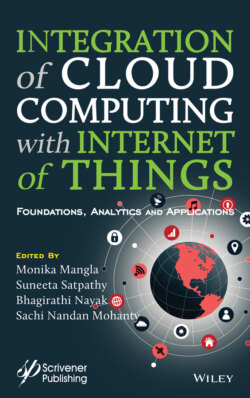Читать книгу Integration of Cloud Computing with Internet of Things - Группа авторов - Страница 36
2.3 The IoT Safety Term
ОглавлениеNo doubt after pre-IoT days, human interaction with technology has developed as an automated control and tracking (e.g. various IoT devices) to access information and utilities (e.g. e-commerce). The IoT word is sweet. This involves intelligent machines followed by various network participants. Research is in the early stages on IoT and its safety characteristics. It is due to creativity and the expansion of this program in different fields such as eHealth, e-commerce and e-traffic.
Several scholars have looked into the health implications of IoT; there is still a shortage of systemic comprehension. IoT technology work primarily addresses problems relevant to privacy concerns. The safety of people, the protection of company structures and the security of third parties are three main concerns for Technology. For IoT environments, there are four complex integrated devices interacting with each other.
These components are individuals, artifacts, software and equipment, which are required to oppose anonymity, protection which transparent confidence problems. Previous threats in normal networks contributing to IoT pose passive and aggressive attacks; hinders its efficiency and invalidates the benefits in utilizing the amenities.
Because IoT devices are limited by hardware tools, the usage of common safety measures is troublesome, let alone user standards that would govern protection choices. At the technical point, there are three kinds of protection restrictions: equipment limitations, device limitations and network shortages. All three tell how protection can be configured for IoT apps.
Restrictions often offer a context for consumers and organizations to focus strategically on the value of IoT protection. Hardware limitations on IoT protection are critical. According to the battery-driven IoT systems it is impossible to relay fully inefficient algorithms for encryption.
Restrictions on memory often face a major challenge. Standard protection algorithms are believed to be important RAM and hard drive space.
This will not refer to IoT devices. Thanks to the small scale and the remote location that is a security threat, IoT systems run the risk of still being compromised [3]. The smallness of the systems at the software level is the reason of some worry regarding the principle of security. To order to maintain the power and resistance characteristics safe enough, IoT systems have small network protocol batteries.
IoT systems also have issues with remote reprogramming and even reprogramming can be challenging, if not difficult. On a networking point of view, there are several questions concerning effectiveness and expandability. Because IoT systems are mobile by design, the need for the versatility of reliable protocols to ensure protection is important. It is impossible for the current network access control protocol to withstand topological changes in the network.
Given the complexity of IoT and protection issues, traditional safety standards and the usage of technologies are troublesome. OWASP [27] also described many threats to harmful hazards that are unique to IoT. It provides the ability to gain usernames by communicating with authentication and raising forgotten passwords. The possibility that poor passwords mix user name information can be a security nightmare. Unencrypted networks will also raise security issues as well as the incomplete upgrade process.
